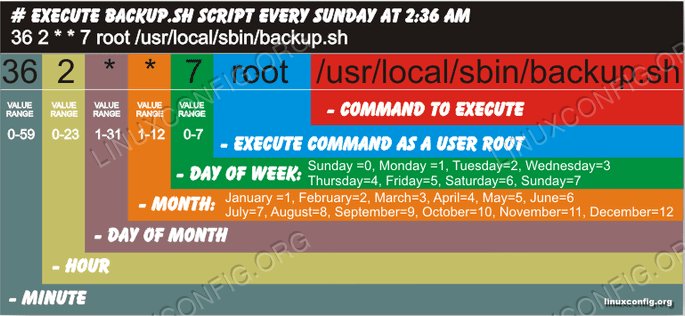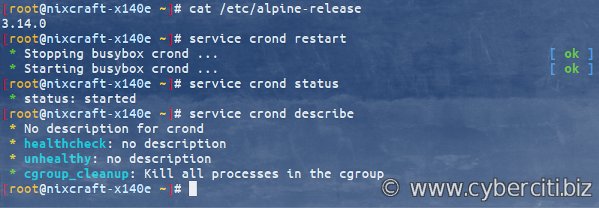Looking to streamline your tasks on your server? Look no further! Cron config is the solution you need. But what exactly is cron config? In simple terms, it’s a configuration file that allows you to schedule and automate various tasks on your server. Whether you want to backup your data regularly, update your website content, or run scripts at specific times, cron config can make it happen. In this article, we’ll delve into the ins and outs of cron config and explore how you can efficiently harness its power to simplify your workflow. So, let’s get started!
Cron Config: A Comprehensive Guide to Automating Tasks
Cron config, short for cron configuration, is a powerful tool that allows you to automate various tasks on your computer or server. Whether you’re a developer, system administrator, or simply someone looking to streamline repetitive tasks, understanding how to effectively configure cron can greatly enhance your productivity.
In this comprehensive guide, we’ll walk you through everything you need to know about cron config, from the basics of cron jobs to advanced techniques for scheduling and troubleshooting. By the end of this article, you’ll have the knowledge and confidence to harness the full potential of cron and make your life easier.
Understanding Cron
Cron is a time-based job scheduler in Unix-like operating systems. It enables users to schedule commands or scripts to run automatically at specified intervals or specific times. Whether you need to run a script every minute, hour, day, week, or month, cron makes it possible.
Here are some key concepts to help you grasp the fundamentals:
- Cron Tab: The cron tab is a file that contains instructions for the cron daemon on when and how to execute scheduled jobs. It is typically located at /etc/crontab or in the /etc/cron.d directory.
- Cron Daemon: The cron daemon is a background process that continually checks the cron tab for scheduled jobs and executes them accordingly.
- Cron Job: A cron job refers to the specific command or script that you want to run at a scheduled time. It consists of a combination of timing parameters and the command to be executed.
- Cron Syntax: Cron uses a specific syntax to define the schedule for a cron job. It consists of five fields: minute, hour, day of month, month, and day of week. Each field can contain a single value, a comma-separated list of values, or a range of values.
Creating and Editing Cron Jobs
Now that you have a basic understanding of cron, let’s dive into creating and editing cron jobs.
To create or edit a cron job, you’ll need to open the cron tab file using a text editor. The exact location of the file may vary depending on your operating system and configuration. Once you’ve located the file, follow these steps:
- Open the terminal or command prompt.
- Type the command to open the cron tab file. For example, if you’re using the nano text editor, you would enter the following command:
sudo nano /etc/crontab - Press Enter to open the file.
- Scroll down to the bottom of the file.
- Add a new line and enter the cron job syntax. For example:
* * * * * command-to-be-executed– This cron job will run the specified command every minute.0 * * * * command-to-be-executed– This cron job will run the specified command at the start of every hour.
- Save the file and exit the text editor.
It’s essential to maintain correct syntax when defining cron jobs. Incorrect syntax can lead to unexpected behavior or failure to execute the scheduled tasks. Use a tool like cron syntax checker to validate your cron syntax before saving the file.
Common Cron Job Examples
Cron jobs can be customized to suit a wide range of needs. Here are a few common examples to give you an idea of how to leverage cron in your day-to-day tasks:
- Backup Script: Schedule a backup script to run daily at midnight to safeguard your data automatically.
- System Updates: Set up a cron job to check for and install system updates at a specific time to keep your system secure and up to date.
- Log Cleanup: Schedule a cron job to delete old log files periodically to free up disk space.
- Database Backup: Automate regular backups of your database to prevent data loss.
- Report Generation: Generate reports automatically at specific intervals to streamline business processes.
Advanced Cron Techniques
While cron is powerful on its own, there are some advanced techniques you can employ to take your automation skills to the next level.
Using Environment Variables
By default, cron jobs run with a minimal environment. This means that they may not have access to the same environment variables as your interactive shell. To ensure that your cron job executes correctly, you may need to set the required environment variables explicitly.
To set environment variables for a specific cron job, you can modify the cron tab entry by prefixing the command with the variables you want to set:
0 * * * * env VAR_NAME=value command-to-be-executed
Replace VAR_NAME with the name of the environment variable you want to set and value with the desired value.
Redirecting Output
By default, the output of a cron job is sent via email to the user who owns the cron tab. However, it is often more convenient to redirect the output to a file for easier analysis or to discard it altogether.
To redirect the output, you can use redirection operators as follows:
* * * * * command-to-be-executed >> /path/to/output.log 2>&1
This example appends the output of the command to the specified log file and redirects the error output (stderr) to the same file.
Scheduling Jobs at Intervals
Cron provides flexibility when scheduling jobs at regular intervals. Instead of specifying a fixed time for execution, you can use predefined keywords to set intervals:
- @reboot: Execute the command once when the system boots up.
- @yearly: Run the command once per year (equivalent to “0 0 1 1 *”).
- @monthly: Run the command once per month (equivalent to “0 0 1 * *”).
- @weekly: Run the command once per week (equivalent to “0 0 * * 0”).
- @daily: Run the command once per day (equivalent to “0 0 * * *”).
- @hourly: Run the command once per hour (equivalent to “0 * * * *”).
You can also combine these keywords with additional timing parameters to fine-tune the schedule according to your needs. For example, “@weekly 5:00” will run the command every week at 5:00 AM.
Troubleshooting Cron Issues
Cron can be a bit tricky to troubleshoot if your jobs are not executing as expected. Here are a few common issues and their potential solutions:
- Incorrect Path: Cron jobs may not have the same PATH environment variable as your interactive shell. To avoid issues, use absolute paths in your cron commands or set the PATH explicitly.
- Permissions: Ensure that the user executing the cron job has the necessary permissions to access the files or directories required by the job.
- Logging: Redirect the output of your cron jobs to a log file for easier debugging. Check the log file for any error messages or unexpected output.
- Cron Service: Monitor the cron service to verify that it is running correctly. Restart the cron service if necessary.
Congratulations! You’ve now mastered the art of cron config. You understand the essential concepts, know how to create and edit cron jobs, and are familiar with advanced techniques for scheduling and troubleshooting. With this newfound knowledge, you can automate repetitive tasks, boost productivity, and free up your valuable time for more important endeavors.
Remember, cron config is a skill that improves with practice. Explore different use cases, experiment with various scheduling options, and keep refining your automation skills. Before you know it, you’ll be a cron config pro, effortlessly harnessing the power of automation to simplify your life.
Linux Crash Course – Scheduling Tasks with Cron
Frequently Asked Questions
What is a cron configuration?
A cron configuration is a file that defines a set of commands to be executed periodically on a Unix-like operating system. It allows tasks to be automated and scheduled to run at specific intervals.
How do I create a cron configuration file?
To create a cron configuration file, you can use a text editor such as nano or vim. Open the terminal and run the command “crontab -e” to edit the cron configuration for the current user. Each line in the file represents a separate task and follows a specific format.
What is the format of a cron configuration line?
A cron configuration line consists of six fields separated by spaces or tabs. The fields represent the minute, hour, day of the month, month, day of the week, and the command to be executed. For example, the following cron configuration line runs a command every day at 9:00 AM:
0 9 * * * /path/to/command
Can I schedule a task to run at specific intervals other than daily?
Yes, you can schedule a task to run at specific intervals other than daily by modifying the corresponding fields in the cron configuration line. For example, to run a command every Monday at 3:00 PM, you would use the following cron configuration line:
0 15 * * 1 /path/to/command
How can I view the existing cron configuration for my user?
To view the existing cron configuration for your user, you can use the command “crontab -l” in the terminal. This will display all the scheduled tasks for the current user.
Can I edit or remove a scheduled task from the cron configuration?
Yes, you can edit or remove a scheduled task from the cron configuration by using the “crontab -e” command to open the configuration file in the editor. You can then modify or delete the corresponding line for the task you want to change. Remember to save the changes before closing the editor.
Final Thoughts
Configuring cron jobs is an essential task for managing automated tasks on a server. Properly setting up cron config ensures that your scheduled tasks run smoothly and efficiently. By defining the desired schedule and command, you can automate various processes such as backups, updates, and data synchronization. With cron config, you have the flexibility to execute tasks at specific intervals or on specific days of the week. Take advantage of this powerful tool to streamline your workflow and save time. Ensure your server’s productivity by mastering the art of cron config.




